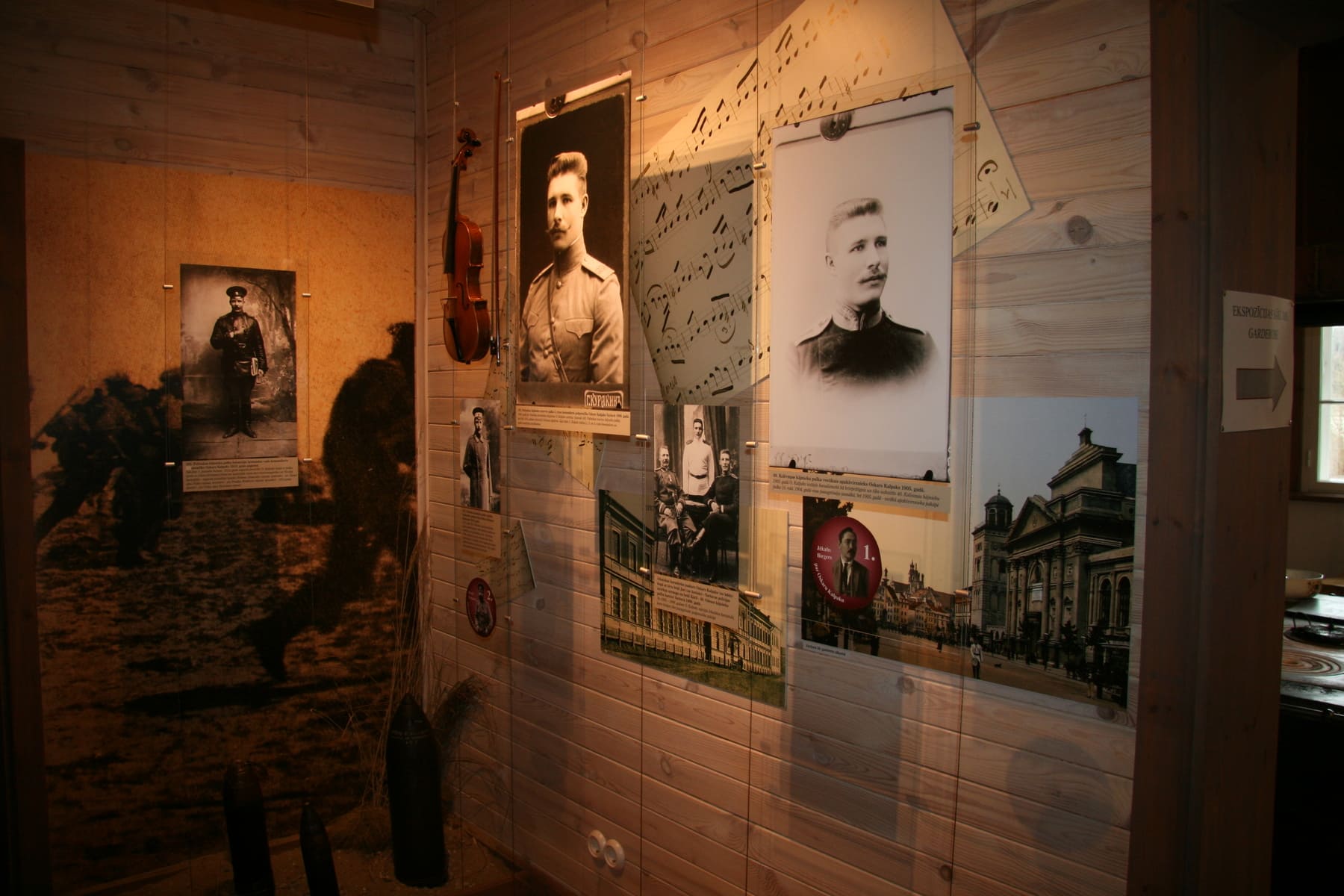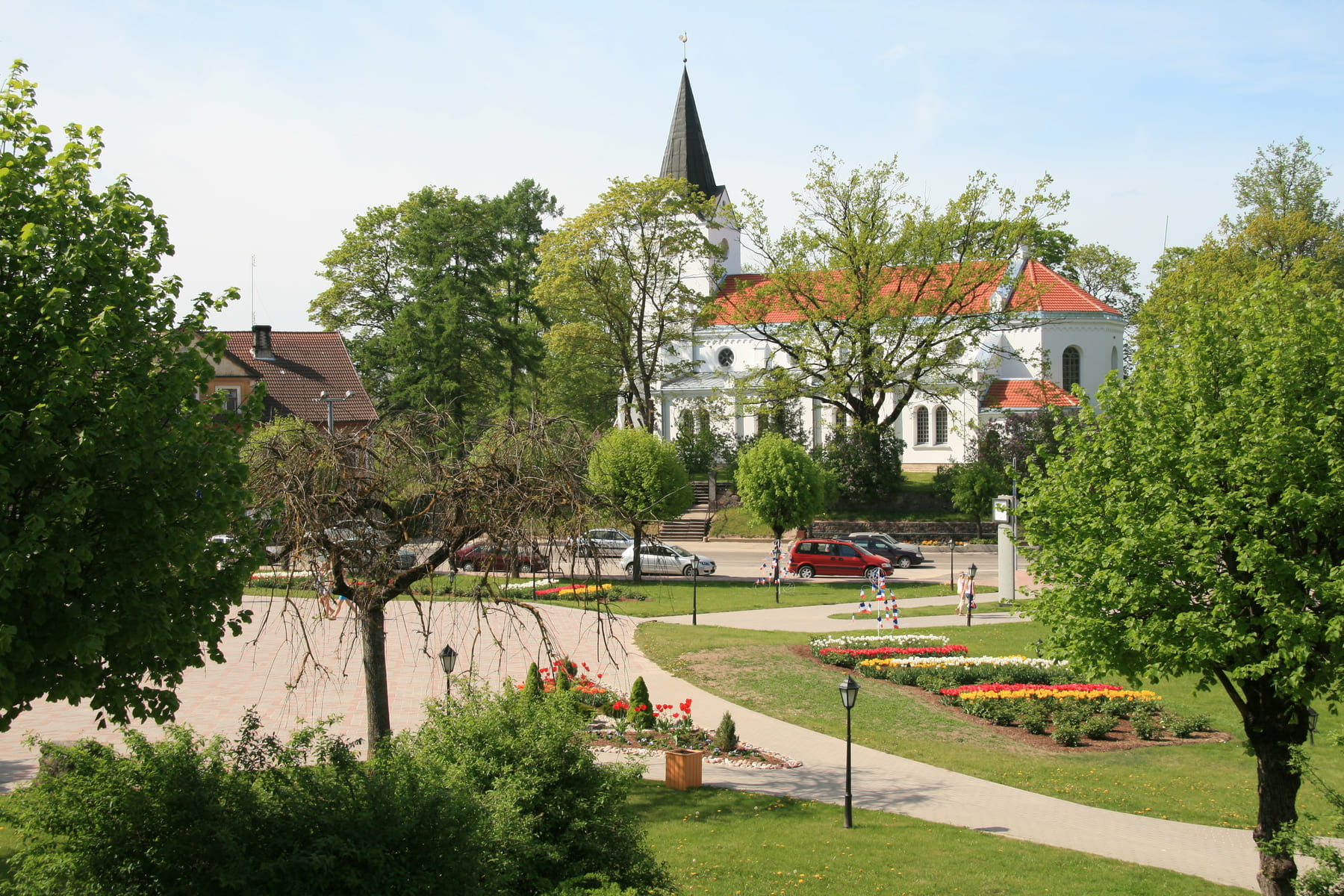What To See?
Remembering notable people and their accomplishments and historical events and – visit the memorial sites in Saldus municipality!
Memorial Site “Airītes” and Museum of Colonel Oskars Kalpaks
A memorial site and a museum were established at the place of death of the commander of the first Latvian Independent Battalion, Colonel Oskars Kalpaks and three other officers. Everyone is welcome to visit the beautiful museum building, the contemporary and elaborate exposition, as well as the memorial site and the small park near the museum.
The museum’s new exhibit is more comprehensive than before and uses new technologies. One part of the exposition is dedicated to the freedom fights and the O. Kalpaks’ Battalion, the second part deals with Oskars Kalpaks’ progress during World War I, while the third part of the exposition shows the testimony of Oskars Kalpaks’ childhood and youth.
There is an audio guide available in three languages – Latvian, German and English. Group tours must be pre-booked by calling +371 22017465.
The museum has a campfire site, a small park and a rope track. By arrangement, groups are also offered the opportunity to bake pancakes and traditional tarts called “sklandrauši”.

Oskars Kalpaks’ Square
The former market square is a popular place for concerts and festivities. On March 10, 1919, Saldus became the first Latvian town liberated by Oskars Kalpaks’ battallion. As a witness of that time a memorial stone was placed in the square and it was named after Oskars Kalpaks.

The Synagogue Square
In 1869, the synagogue of Saldus was consecrated here. In 1941, the World War II and the genocide carried out by the Nazi Germany wiped out the Jewish community and the synagogue in Saldus. In 2021, the Synagogue square was created here to commemorate the Jewish community of Saldus.

Memorial plaque dedicated to Ēriks Ķiģelis
In 2015, a memorial plaque to the popular Latvian musician and composer Ēriks Ķiģelis was unveiled in Saldus, Striķu street 5. The musician had lived in this house for 20 years. A tit is depicted on the commemorative plaque – this symbol was chosen because the song “The Tit”, written by Ē. Ķiģelis, is legendary. The plaque was created by Egils Mednis, with the support of Saldus Rotari Club and the Society in honour of the musician’s 60th anniversary.

Janis Rozentāls’ Native House “Bebri”
The beautiful surroundings of the native house may have shaped J. Rozentāls into an outstanding artist. There is a memorial plaque at the building, and a museum named after him is located in Saldus, in a house and workshop designed by the artist himself.

Saldus German Soldiers’ Cemetery
A search for military burial sites and the reburial of German soldiers have been taking place since 1997. Currently, approximately 26 000 German soldiers have been reburied at the cemetery, but the work is still ongoing, as all of the burial sites have not been explored yet. A register of the fallen soldiers buried at the cemetery and in Latvia is available. For more information regarding the register, please e-mail ilze.haruna@saldus.lv .

Memorial ensemble to the deported people “The Way of the Cross”
Memorial ensemble to the deported people “Krusta ceļš” (“The Way of the Cross”), unveiled in June 2009, consists of four freight wagons – each for a different deportation period. Wagon with roofs symbolize houses. In the middle of the ensemble, there is an altar and a cross. The monument differs from others in reminding that Latvian citizens were deported not only on 14 June 1941 and 25 March 1949. The memorial ensemble was created by local artist and an expert on local history Maija Eņģele.

The Tomb of the Barons von Nolcken
The tomb was built in 1879 and renovated in 1990. Baron von Nolcken’s family members are buried there. Some tales tell that there are tunnels connecting the tomb to Ezere manor.

Birthplace of Writer Irma Grebzde
Reņģe railway station was opened at the same time as Jelgava-Mažeikiai railway, but the present building was built in 1935. Writer Irma Grebzde was born in this station. A memorial plaque to the writer is placed on the wall of the building.

Memorial Stone to Writer Jēkabs Janševskis
A memorial stone dedicated to Jēkabs Janševskis is located near his native homestead “Kalna Krīcmaņi”. Jēkabs Janševskis has vividly described the life and the characters of the local people in his novels.

